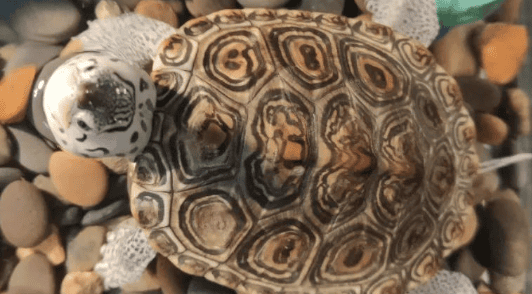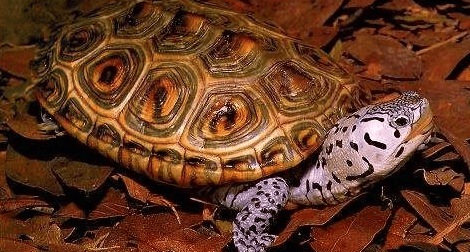The Diamond Turtle, this elegant creature originating from the beautiful country, is also known as the "Diamond-spotted Turtle". It enjoys the distinguished name of "Diamond" level in the United States. Diamond turtle prices have also dropped a lot in recent years. In an era when egg turtles are rampant, I personally think that diamond turtles are still suitable for most people. Not only do they look good, but they are not difficult to raise. The Diamondback Turtle is also a member of the "Brazilian Face" group, and it can be said that it is similar to the Brazilian Face when it comes to breeding.

"Brazilian face" Are you still nervous? There are also many classifications of diamond patterns.
Subspecies distinction
Common northern diamondback turtle
Concentric northern diamondback turtle
Common Carolina diamondback turtle< /p>
Concentric Carolina Diamondback Turtle
Florida East Coast Diamondback Turtle
Mississippi Diamondback Turtle
Texas Diamond Turtle
Super Texas Diamond Turtle
Ornate Diamond Turtle (Brocade Diamond)
The currently controversial Ornate Diamond
p>Mangrove Diamond Turtle
[Water Quality Decryption] Are you still hesitating about which water quality to choose to serve your Diamond Turtle? Stop worrying, fresh water is the way to go! reason? In detail:
The diamondback turtle population in domestic farms has been thriving for more than ten years. These turtles have been living in freshwater environments and have considerable output every year, proving that they have fully adapted. the local environment. Therefore, domestic diamondback turtle seedlings are authentic freshwater species, and freshwater breeding is no longer a problem.
Imported seedlings? Learn about the diamondback turtle's wild form. The larvae live in inland waters with extremely low salinity and migrate to the seawater environment as they grow older. Moreover, since the diamond turtle was listed as a secondary controlled species in 2013, wild capture has almost disappeared. Most of the imported seedlings on the market are freshwater culture, and freshwater is the first choice for players.

[Salt Water Usage Guide] What? When to use salt water? There are only two situations:
When diamondback turtles are sick, sea salt can be added to the original water body (the salinity is controlled within the salinity range of seawater). Salt water is like a medicine to cure diseases, and it can only be used when the turtle is sick. Need to use.
Wild adults live in salty seawater, and if you have a wild-caught adult diamond turtle, saltwater is their home.
[Environmental settings] Basking table + sunlight\UVB light + large water body, none of them can be missing:
Baking table is a must, so that your diamondback turtle can Dry yourself thoroughly and enjoy the warm sunshine.
UVB lamp is the savior of urban residents, no sunshine? High quality UVB lamps are the best alternative.
Diamondback turtles are deep-water turtles. The bigger and deeper the water body, the better, allowing them to swim freely.
[Feeding Tips] Control the amount of feeding to keep your diamondback turtle healthy and not gain weight:
The larvae can feed it twice a day in summer, and reduce it to once a day when they grow up. , once every two days as an adult, a variety of foods is key.

 扫一扫微信交流
扫一扫微信交流
发布评论